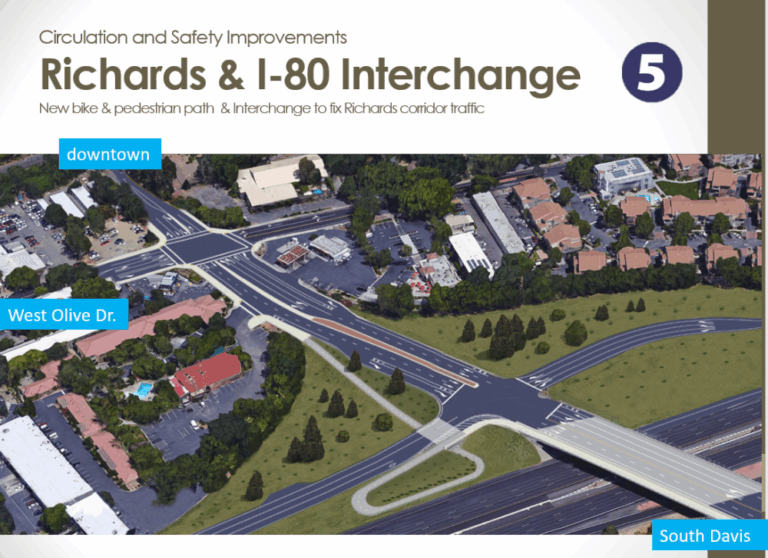Physical Address
304 North Cardinal St.
Dorchester Center, MA 02124
Physical Address
304 North Cardinal St.
Dorchester Center, MA 02124

The alternative title for this piece was: “Ballot Box Zoning: Where Needed Housing Goes to Die.” Next month, Los Angeles will be voting on Measure S, a proposed 2-year policy that will effectively serve as a moratorium on new construction. That is, Measure S will require a public vote on any new development that does not fit within existing zoning. Most of the city’s major leaders, including Mayor Eric Garcetti, have come out against the measure, and the Los Angeles Times followed suit just a few days ago. I’m not going to rehash arguments for or against the measure. Instead, I’m going to offer several warnings based on the experience of Davis, CA, which passed its own Ballot Box Zoning Measure in 2000. Measure J, our ballot box zoning measure, requires voter approval on any attempt to change the zoning designation of open space or agricultural land that sits on the community’s edges. The law also explicitly names two particular parcels that must be voted on prior to approval. So for the purposes of this piece, consider it a ballot box zoning law targeting sprawl. Warning 1: These Measures Are Hard To Roll Back Measure J passed in Davis with just 53.6% percent of the vote in a March primary when residents cast just 19,000 votes (in a city with at least 49,000 voting-age residents). The law contained a renewal clause, and when it came up for renewal in 2010, support jumped to 76.7% percent. This increased support may be an artifact of how the opposition attempted to stall the measure’s renewal. Opponents of the renewal made a NIMBY argument the centerpiece of their case: they argued that slowing growth at the edge of town meant more infill pressure in the city’s core, threatening the character of neighborhoods. As I’ll discuss in a […]

As a Market Urbanism reader, you are hopefully fluent in the problems of exclusionary zoning. If you’re new to the term, there are some good pieces on the topic here and here. Basically: exclusionary zoning is the use of zoning to price people out of a community. The classic example is minimum lot sizes or minimum unit sizes: cities only zone parcels big enough to ensure low-income families cannot afford the housing. When subsidies for affordable housing require specific unit attributes, like reduced parking ratios, a community can simply require parking ratios above that threshold (although states can move swiftly to stamp out such practices). States have also responded to exclusionary zoning practices with a wide array of policy interventions known collectively as “anti-snob laws.” One key component of California’s anti-exclusionary efforts is called the Regional Housing Needs Allocation (RHNA). The law requires each jurisdiction in the state to produce a Land Inventory (or Adequate Sites Inventory, or Sites Inventory, or Buildable Land Inventory) that demonstrates the jurisdiction possesses space to accommodate anticipated housing needs at adequate densities. Read “adequate densities” as dense enough to produce affordable units. Scott Wiener, the state senator representing San Francisco, is pushing to give the RHNA some real teeth. The most contentious component of the process is the definition of “need” for each jurisdiction. The state calculates anticipated need based on population and jobs projections for each region. Regional councils of government (COGs) are then empowered to distribute the regional need to each jurisdiction within that region. Need is quantified in terms of units, and these needed units are further categorized into four groups: units affordable to Very Low Income, Low Income, Moderate Income, and Above Moderate Income households. Regional agencies had some flexibility in making these allocations in the past. Thanks to SB 375, which passed in […]
Davis, CA, is a small college town a twenty minutes’ drive outside of Sacramento (on a good day). It has a vacancy rate on par with Manhattan despite being surrounded by flat, developable farmland. Some critics attribute this absurd vacancy rate to Measure R, a ballot initiative approved by Davis residents in 2000 that requires a public vote on any peripheral development. Since it’s passage, three developments went up for a vote, and all of them failed. The group that defends Measure R is known as the “Citizens for Responsible Planning” or CRP. Throughout various development battles, CRP has strategically utilized air quality concerns to push new development further away from existing neighborhoods. They opposed the most recent Measure R development, Nishi Gateway, because toxic air quality made the site virtually uninhabitable, at least in their minds! In fairness: the site is sandwiched between railroad tracks and a major highway, Interstate 80. So it’s a real concern. But fast-forward just six months later, and CRP is demanding the University of California, Davis, the area’s largest employer, dramatically expand its on-campus housing options for students, staff, and faculty. In an effort to appear proactive, they produce a map of optimal sites to locate student housing on the UC Davis Campus. One of the sites they select is adjacent to the Nishi parcel they so aggressively opposed development on just six months earlier. Another parcel they suggest building housing on is also sandwiched between the same railroad tracks and highway that Nishi sat between, but just a couple miles further south (and further from existing neighborhoods). You can see all of this in a map provided below, where the Nishi site they killed at the ballot is marked in red and the sites they claim to support student housing on are colored in blue: […]